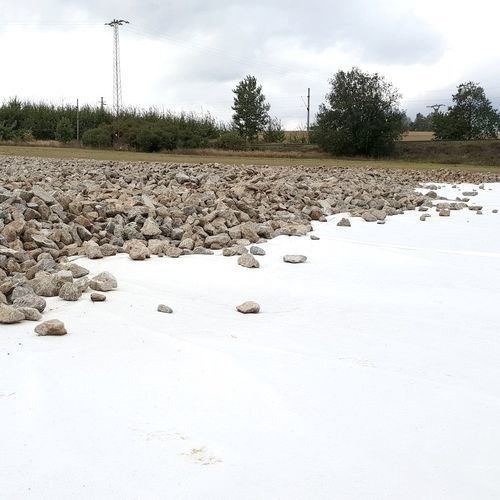Non-woven geotextiles geoNETEX® are manufactured from polypropylene and polyester staple fibres using needle punching technology. In order to improve the mechanical and physical properties of the material, some types of the geotextile are treated by calendering.
Our geotextiles are offered in different widths from 1.0 to 6.5m, with mass per unit area ranging from 90 to 1500g/m2. Standard colours variations include white, grey and multicolour, different colour modifications are available upon request.
Due to our long-lasting experience in the production of geotextiles and quality raw material used, non-woven geotextiles geoNETEX® present a reliable solution for a wide range of engineering applications and installations performing the functions of separation, filtration, protection and drainage.
geoNETEX® geotextiles are manufactured with different degrees of UV-stabilisation. For special applications (e.g. tunnels) geotextiles with lower level of flammability can be provided.
Our geotextiles pose no risks to the environment and health, they do not contain any heavy metals or other hazardous substances. They are characterised by outstanding mechanical and hydraulic properties and life span up to 50 years (under specified conditions).
Polyester non-woven geotextiles are not suitable for application in alkaline environments.






